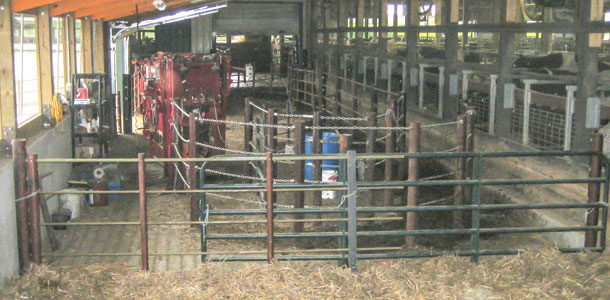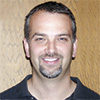It is now becoming common on dairy farms to have a dedicated area for hoof-trimming cattle. This is perhaps not surprising given the importance of lameness prevention to overall successful herd management.
Cattle should be trimmed routinely as heifers when they transition, at around 60 to 100 days in milk (DIM) and at dry-off, unless there are excessive hoof wear issues. In addition, pens should be locomotion-scored each week to identify lame cows for prompt attention in the trim chute, and every farm should be able to place a hoof block on a cow with a developing ulcer to alleviate pain.
A stationary trim chute can likely be justified on most farms, but access to a hoof trimmer’s mobile chute is usually necessary. Sometimes trimmers working with assistants will operate multiple chutes simultaneously that need to be accommodated.
The area should have a wide overhead door for access with good lighting and shelter from the rain and elements. Transfer lanes between barns have become an ideal spot for a hoof-trimming area and a good use of this space.
Multiple groups of cattle sorted from different pens require accommodation while they wait to be trimmed. These cows may occupy one space and be re-sorted after trimming. Preferably, however, these groups could be kept separate before and after trimming by having separate holding pens.

If cows are waiting one to two hours, then around 15 square feet per cow should be provided for standing room; however, if the waiting duration is more than that, then they should have access to a separate lying area.
An “on-deck” area is needed to hold four to six cows so they may be moved in small groups. Access to the chute should be down a narrow space, roughly 3 feet wide. Dairy cattle do not seem to need the solid sidewalls commonplace on beef ranches, but the fencing should avoid the risk of injury and can be solid up to cow head height.
In general, chutes load best if the cows are channeled into the corner of a pen and then enter the mouth of the race with the assistance of a moving gate to direct cattle. The lane is designed to convince the cows they are “escaping” back to where they came from. A bud box can also be adapted for loading chutes, which follows a similar concept.
Last, hydraulic chutes require access to electricity, and some overhead cable above the chute area is ideal to keep wires up and out of the way. It is also useful to have a high-powered wash hose located nearby. PD
Nigel Cook is currently chair of the Department of Medical Sciences at the University of Wisconsin – Madison School of Veterinary Medicine and manages the Dairyland Initiative.
PHOTO: Photo courtesy of Nigel Cook.

-
Nigel B. Cook
- Veterinarian
- UW-Madison, School of Veterinary Medicine








